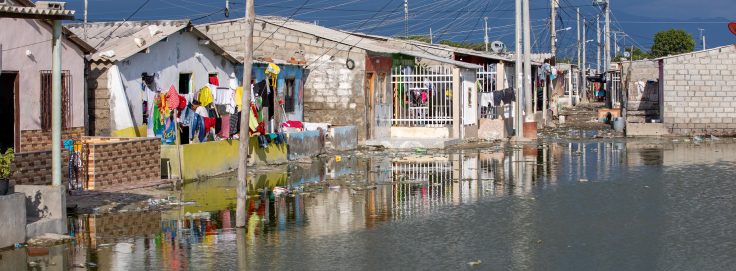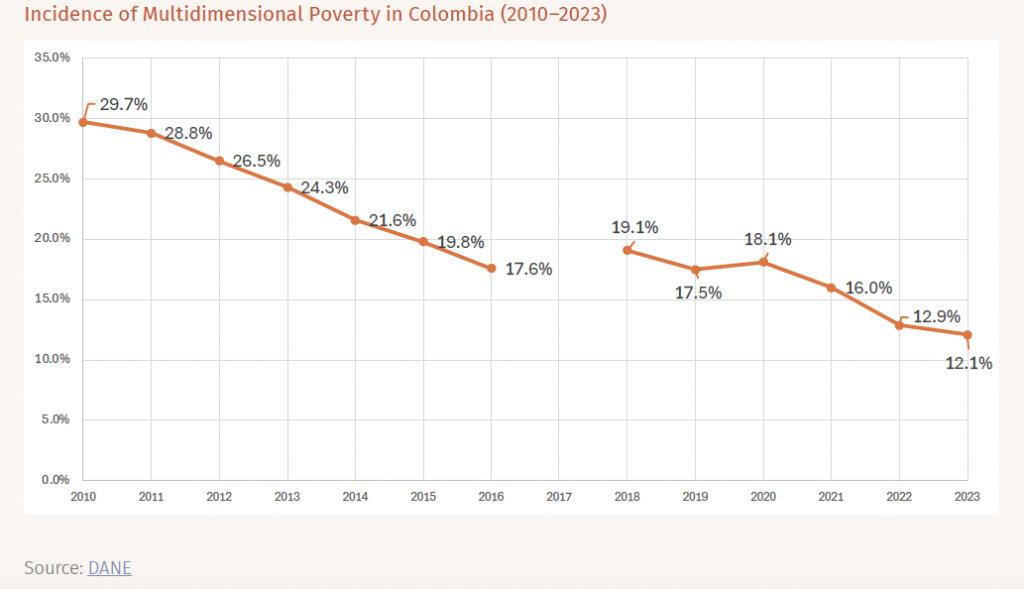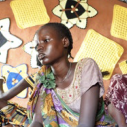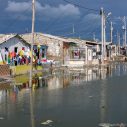
Search
“Reducing multidimensional poverty must be a priority for global leaders”

As President of Colombia (2018–2022), Iván Duque prioritized poverty reduction, using the Multidimensional Poverty Index (MPI) as a key policy tool. In this interview, he discusses lessons learned, challenges faced, and why global leaders must urgently act to combat multidimensional poverty.
His efforts included successful monitoring programmes and the creation of new strategies focused on providing opportunities to those with the greatest needs.
The former president discusses the challenges faced during the COVID-19 pandemic and the region’s humanitarian crisis, as well as the key elements in prioritising multidimensional poverty reduction and implementing coordinated national policies aligned with the Sustainable Development Goals (SDGs). Colombia has been a regional leader in applying the MPI, using it as a tool to shape social programs and drive poverty reduction. Under Duque’s administration, significant strides were made, particularly in post-pandemic recovery.
During your presidency, why was multidimensional poverty reduction so important, and why should it be a political priority?
I based my presidential campaign on the promise that my government would focus on social justice. We placed a strong emphasis on equity, which, to me, means providing opportunities to those most in need. Achieving this requires a technocratic approach combined with managerial vision to significantly reduce multidimensional poverty. At the same time, we successfully reduced extreme poverty and monetary poverty.
Equity was the backbone of the state’s social agenda, enabling us to tackle inequalities through a management framework outlined in the National Development Plan, aligned with the 17 SDGs of the 2030 Agenda.
For this reason, multidimensional poverty reduction was a key factor in achieving equity. It highlights and addresses inequalities, directs budget investments into social programmes targeting the most vulnerable populations, and provides a clear management framework.
How did you ensure that multidimensional poverty reduction remained a priority during the transition between outgoing and incoming administrations?
In Colombia, multidimensional poverty has been measured since 2010. It has been 15 years, four of which were during my term. We worked with many of the methodologies advanced by the Santos administration and improved some previously used ones.
There was a brief gap of a couple of years when indicators were recalculated at the end of the Santos administration and the beginning of ours. However, during my term, we consolidated the idea in Colombia that multidimensional poverty reduction transcends political cycles. It is and must be a state policy. Poverty reduction must remain a priority, partly because, as Amartya Sen’s theories suggest, the Multidimensional Poverty Index (MPI) offers a comprehensive perspective based on a solid analytical foundation: access to and the full exercise of individual freedoms.
Multidimensional poverty is not solely linked to income but also to access to minimum standards of social protection. That was our obsession. My administration provided all the information and indicators, establishing robust monitoring systems for budget tracking.
For multidimensional poverty, as with any policy, we must preserve what works, fix what doesn’t, and innovate what doesn’t exist yet. That’s why we maintained the Familias en Acción programme, created Ingreso Solidario to address the pandemic, quintupled the Jóvenes en Acción programme, and invested in Colombia Mayor. Additionally, we implemented the VAT refund programme, another critical instrument.
What advice would you give to other leaders in the region seeking to prioritise multidimensional poverty reduction?
Multidimensional poverty reduction must be a priority for heads of state. For me, it was not only a priority but an obsession. That’s why I always chaired the Equity Roundtable.
I firmly believe that rigorous oversight and constant monitoring of budget execution are essential. From there, it is necessary to analyse investment costs and know precisely where the most significant efforts should be made. This requires strong coordination among all state entities and a transparent mechanism for budget tracking to monitor execution and measure its impact.
The Equity Roundtable was key because it served as a coordination space where we brought together agencies focused on poverty reduction, cross-cutting institutions, and the National Administrative Department of Statistics (DANE in Spanish) to ensure we were heading in the right direction.
We must strengthen, correct, and innovate public policies to ensure continuity across governments. It is also crucial to prioritise government coordination through working groups and, ultimately, lead the management of the state’s social policy.
In short, reducing multidimensional poverty must be a priority for global leaders to achieve the social wellbeing of their populations.
This article was published in Dimensions 17
_______________________________________________________________________________
BOX
The Equity Roundtable and Multidimensional Poverty Reduction in Colombia
The Equity Roundtable was a high-level interministerial coordination mechanism included in the 2018–2022 National Development Plan and institutionalied through a decree. Convened and chaired by the then-President Iván Duque, it focused on monitoring and tracking progress toward the 17 SDGs.
The Equity Roundtable implemented strategies to reduce poverty and inequality while fostering social and economic inclusion for the Colombian population. Using 500 indicators linked to the SDGs, with data sourced from a control dashboard and monitored through a traffic-light system (red, yellow, green), the Equity Roundtable tracked progress, implementation, and bottlenecks in meeting annual targets.
In Colombia, multidimensional poverty decreased by 4.1 percentage points in 2019 compared to 2018 but increased by 2.6 points in 2020 due to the COVID-19 pandemic. In subsequent years, multidimensional poverty reached a historic low since its adoption as a complement to monetary poverty measures in 2010.
In 2022, the incidence of multidimensional poverty decreased to 12.9%, 3.1 percentage points lower than in 2021 (16.0%), during a period marked by post-pandemic economic recovery.
Multidimensional poverty reduction in Colombia has been the result of leadership efforts and coordination among government agencies, ministries, and departments. It has also reflected innovation in measurement methods, thanks to DANE, as well as inter-ministerial coordination and public policies informed by the national Multidimensional Poverty Index.
In recent years, Colombia has faced significant social, economic, humanitarian, and public health challenges, prompting an urgent call to strengthen coordination efforts to leave no one behind by reducing poverty in all its dimensions and ensuring the population’s wellbeing.
This article was published in Dimensions 17
















